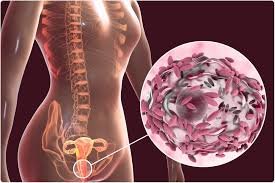Bacterial Vaginosis: Causes, Symptoms, Treatments, and Prevention
Bacterial vaginosis (BV) is a common vaginal infection caused by an imbalance of bacteria in the vagina. While BV is not typically considered a sexually transmitted infection (STI), it can increase the risk of complications such as pelvic inflammatory disease (PID) and preterm birth if left untreated. In this comprehensive guide, we’ll delve into the causes, symptoms, treatments, and prevention strategies for bacterial vaginosis to provide valuable information and support for those affected by this condition.
Causes of Bacterial Vaginosis: Uncovering the Microbial Imbalance
Bacterial vaginosis occurs when there is an imbalance of bacteria in the vagina, with an overgrowth of harmful bacteria such as Gardnerella vaginalis and a decrease in beneficial bacteria such as lactobacilli. While the exact cause of BV remains unclear, several factors may contribute to its development, including:
- Sexual Activity: While bacterial vaginosis is not considered a sexually transmitted infection (STI), it is more common in sexually active individuals, particularly those with multiple sexual partners or a new sexual partner.
- Changes in Vaginal pH: Normal vaginal pH is slightly acidic, which helps maintain a healthy balance of bacteria. Factors such as douching, using scented soaps or vaginal hygiene products, or menstrual blood can disrupt the natural pH balance of the vagina and contribute to BV.
- Hormonal Changes: Hormonal fluctuations, such as those that occur during menstruation, pregnancy, or menopause, can alter the vaginal environment and increase the risk of bacterial vaginosis.
- Antibiotic Use: Antibiotics can disrupt the normal balance of bacteria in the vagina, leading to an overgrowth of harmful bacteria and an increased risk of BV. This is particularly common in individuals who take antibiotics for other infections such as urinary tract infections (UTIs).
- Smoking: Smoking has been linked to an increased risk of bacterial vaginosis, possibly due to its effects on immune function and vaginal pH.
Recognizing the Symptoms of Bacterial Vaginosis
Bacterial vaginosis can present with a variety of symptoms, although some individuals may experience BV without any noticeable symptoms. Common symptoms of bacterial vaginosis include:
- Vaginal Discharge: Thin, watery, or milky-white vaginal discharge is a common symptom of bacterial vaginosis. The discharge may have a strong, fishy odor, particularly after sexual intercourse or during menstruation.
- Vaginal Odor: A strong, fishy odor, particularly after sexual intercourse or during menstruation, is characteristic of bacterial vaginosis. The odor may be more noticeable after unprotected sex or after washing with soap or vaginal hygiene products.
- Vaginal Itching or Irritation: Some individuals with bacterial vaginosis may experience vaginal itching, irritation, or discomfort, although these symptoms are less common than vaginal discharge or odor.
- Burning Sensation: A burning sensation during urination or intercourse may occur in some individuals with bacterial vaginosis, although these symptoms are more commonly associated with other vaginal infections such as yeast infections or urinary tract infections (UTIs).
Treatment Options for Bacterial Vaginosis: Restoring Vaginal Health
Treatment for bacterial vaginosis aims to restore the natural balance of bacteria in the vagina and relieve symptoms. Common treatment options for BV include:
- Antibiotics: Oral antibiotics such as metronidazole, clindamycin, or tinidazole are commonly prescribed to treat bacterial vaginosis. These medications work by killing the harmful bacteria responsible for BV and restoring the balance of vaginal flora.
- Vaginal Creams or Gels: Topical antibiotics such as metronidazole or clindamycin may be prescribed in the form of vaginal creams or gels for the treatment of bacterial growth. These medications are applied directly to the vagina and are often used in combination with oral antibiotics for optimal effectiveness.
- Probiotics: Probiotic supplements containing beneficial bacteria such as lactobacilli may help restore the natural balance of vaginal flora and prevent recurrent episodes of bacterial growth. Probiotics are available in oral capsules, vaginal suppositories, or fermented foods such as yogurt.
- Avoiding Irritants: Avoiding irritants such as douching, scented soaps, vaginal hygiene products, or tight-fitting clothing can help prevent irritation and disruption of the vaginal flora, reducing the risk of bacterial growth.
Prevention Strategies for Bacterial Vaginosis: Maintaining Vaginal Health
Preventing bacterial growth involves practicing good hygiene and adopting healthy habits to maintain a balanced vaginal environment. Some common prevention strategies for BV include:
- Practicing Safe Sex: Using condoms during sexual intercourse can help reduce the risk of sexually transmitted infections (STIs) and bacterial growth. Limiting the number of sexual partners and avoiding unprotected sex can also lower the risk of BV.
- Avoiding Douching: Douching disrupts the natural balance of bacteria in the vagina and can increase the risk of bacterial growth and other vaginal infections. It’s best to avoid douching and allow the vagina to maintain its natural pH balance.
- Maintaining Good Hygiene: Practicing good hygiene, including washing the genital area with mild, unscented soap and water, can help prevent the buildup of harmful bacteria and reduce the risk of bacterial vaginosis.
- Wearing Breathable Clothing: Wearing breathable cotton underwear and loose-fitting clothing can help promote airflow to the genital area and reduce moisture and heat, which can create an ideal environment for bacterial growth.
- Avoiding Antibiotic Overuse: Limiting the use of antibiotics unless necessary can help preserve the natural balance of bacteria in the vagina and reduce the risk of bacterial growth. It’s important to use antibiotics only as prescribed by a healthcare professional and to complete the full course of treatment.
In conclusion, bacterial vaginosis is a common vaginal infection caused by an imbalance of bacteria in the vagina. By understanding the causes, recognizing the symptoms, exploring treatment options, and implementing prevention.
Thanks for visiting Gymbag4u.com
You may also love reading our following articles. Vaginal Itch: Causes and Remedies – GymBag4U and Yeast Infection: Causes, Symptoms, Treatments, and Prevention – GymBag4U and Why Daily genital cleaning during bathing important? – GymBag4U
